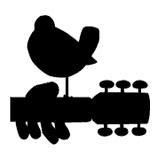
Kwaito.
Art imitates life. Summarising the state of the kwaito industry is like trying to condense the history of American hip hop music into a few pages. Some broad brushstrokes will serve as an introduction, but to fully appreciate kwaito, you’ve got to hear it for yourself.
Like hip hop in the United States, kwaito is not just music. It is an expression and a validation of a way of life - the way South Africans dress, talk and dance. It is a street style as lifestyle, where the music reflects life in the townships, much the same way hip hop mimics life in the American ghetto.
Just as many of the influences on hip hop come from the streets of New York and California, kwaito is known as the musical voice of young, black, urban South Africa.
Kwaito did not originally aim to show a South Africa happy in its new urbanity, especially because urban life has been exploited by foreign commerce. For these reasons, kwaito’s best moments become those that deliver a chorus of black voices opposing a legacy of bureaucracy and racism, and anticipating a new identity and mobility on its own terms.
Kwaito was touted as part of a South African renaissance, but it’s also part of a South African revolution - one that does not suffer misinterpretation lightly.
Major proponent of the movement is Mandoza, whose music clip is featured below.
Source: www.mentalfloss.com

No comments:
Post a Comment